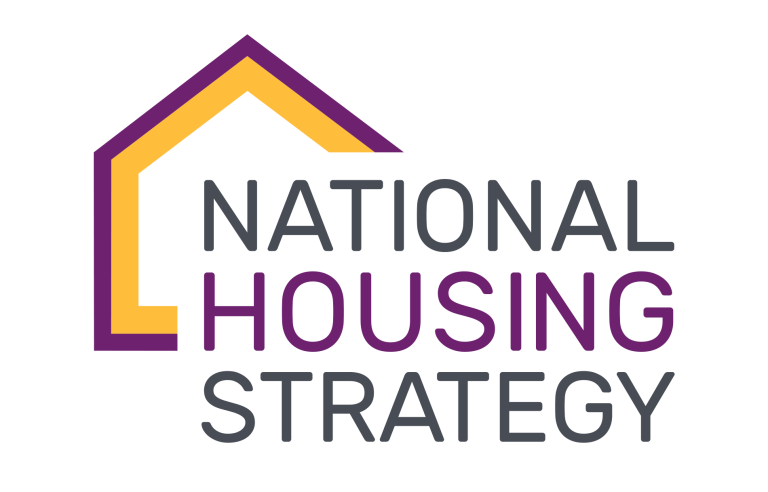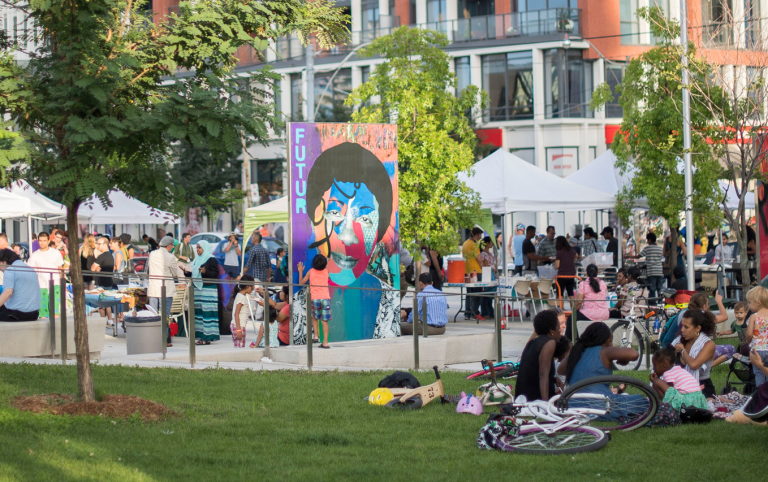
Parks in Action: Co-designing Inclusive Open Spaces
This exhibition highlights the role of parks and open spaces in fostering climate action in Toronto’s inner suburbs. Urban green spaces range from expansive ravine networks to pocket gardens, and from street right-of-ways to school yards and green roofs. Regardless of their scale, they are valuable tools for urban climate change mitigation and adaptation, and are gathering places that promote social interaction, health, and well-being. This exhibition aims to demonstrate how climate action in the public realm is generative of participatory design and social engagement -- from the scale of small local installations “hubs” to “tower communities” along urban watersheds - ensuring that all communities, regardless of their socio-economic backgrounds, have equal access to green spaces and their benefits.
Virtual Exhibits
The Virtual Pavilion exhibits its physical and new exhibitions online. This creates new opportunities for the Pavilion's audience to engage and interact with the content. The Pavilion continues to bring to the forefront important concepts on sustainable urbanisation.
Featured Exhibits

New Neighbourhoods: A Global Tour
This exhibition was prepared for the World Urban Pavilion by Smart Density. Addressing the challenges of long-term development and creating complete, sustainable communities has been at the forefront of our discussions at Smart Density. In 2022, our commitment to creating thriving and sustainable neighbourhoods led us to initiate a collaborative effort with the University of Toronto’s School of Cities, a renowned multidisciplinary hub for urban research, education, and engagement creating new and just ways for cities and their residents to thrive. Together, we aimed to create a guidebook that showcases best practices from around the world in planning new neighbourhoods.
This collection of new neighbourhoods was carefully curated based on well-defined criteria, and illustrated with eye-catching visuals. We hope that it inspires the planning and design of resilient, sustainable, and remarkable neighbourhoods in the Greater Toronto Area (GTA) and beyond. Together, we can shape the future of our communities, one innovative neighbourhood at a time.
Past Exhibits

An Exhibit on First Nations Housing
"CMHC exists for a single reason: to make housing affordable for everyone in Canada. We know that housing helps people stay employed, do better in school and participate more fully in society. Housing affordability and a stable housing finance system support a stronger, safer Canada where everyone can live with dignity. Affordable housing for all is an ambitious goal, and we can’t do it alone. We’re mobilizing the expertise and energy of governments, non-profits, lenders, developers, social entrepreneurs and co-ops to create the future of housing. Canada’s first-ever National Housing Strategy is just one example. Together, we’re removing barriers to ensure that no one is left behind."

As cities around the world recover from the impacts of the pandemic, there is a unique opportunity to tap into innovative forms of city-building that put social purpose at the centre of the rebuilding effort. In Toronto, there is an emerging movement towards creative mixed-use buildings that deliver significant affordable housing among other critical social infrastructures. Creative mixed-use buildings bring together public, private, and non-profit uses in novel ways, co-locating unexpected partners in the same facility.
An exhibition of unexpected creative mixed-use buildings that foster community

archiKID is a platform that explores built environments as a playground for interconnected knowledge and believes multidisciplinary learning is crucial for kids› modern thinking and for their expression and exploration skills. The exhibit focuses on the educational aspect of archiKID activities in creating its workshops, would not come into existence without our students, our peers, and our team who rendered relentless support of insight and emotion to make this happen.
Future Architects of Sustainability

Unlike many redevelopment projects, the Revitalization of Regent Park is unique in that it has always involved a two-track approach – a physical redevelopment, and a Social Development Plan.The Regent Park Social Development Plan (SDP), endorsed by Toronto City Council and the Toronto Community Housing (TCH) Board of Governors in 2007 and funded by the City of Toronto in 2020, was the first of its kind. The physical development plan, operationalized through the Zoning By-law, called for new streets, parks and facilities, along with new residential buildings and townhouses. The SDP, on the other hand, would function as a change management framework that outlined the social, economic strategies and mechanisms that would improve the quality of life for Regent Park residents and lead to a revitalized community.
The Regent Park Journey
© 2024 The World Urban Pavilion in Regent Park. All rights reserved.
We need your consent to load the translations
We use a third-party service to translate the website content that may collect data about your activity. Please review the details in the privacy policy and accept the service to view the translations.